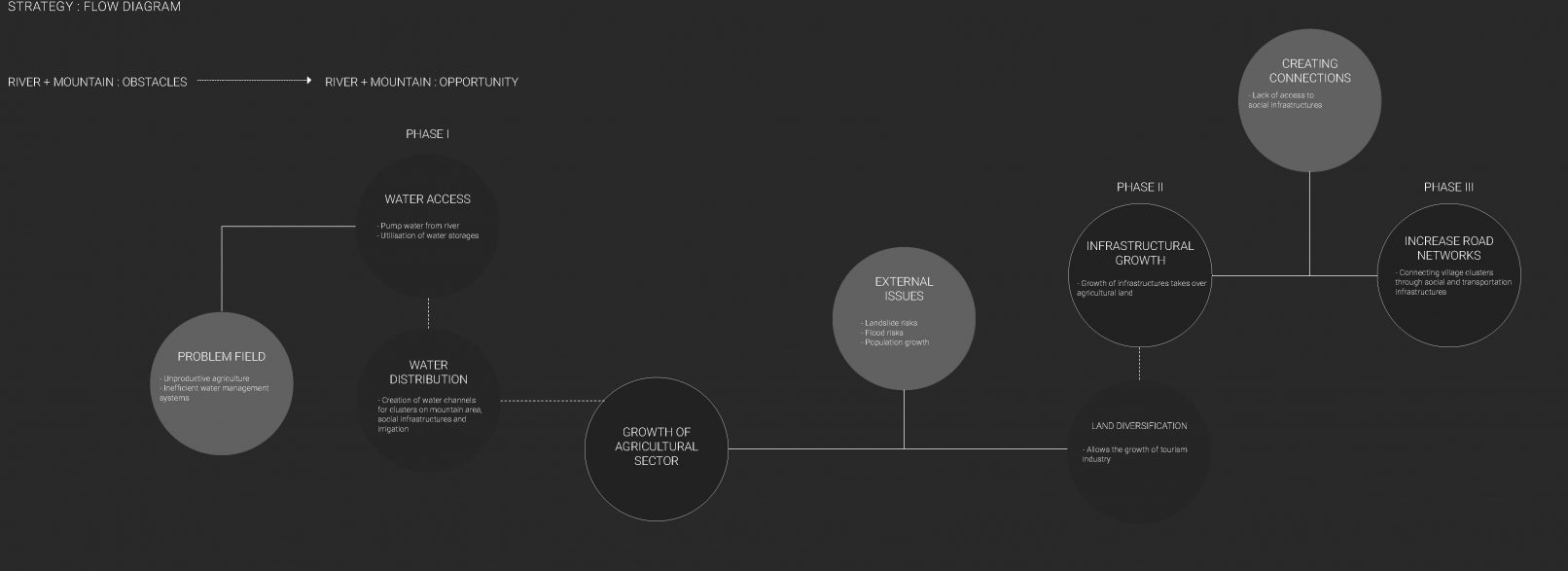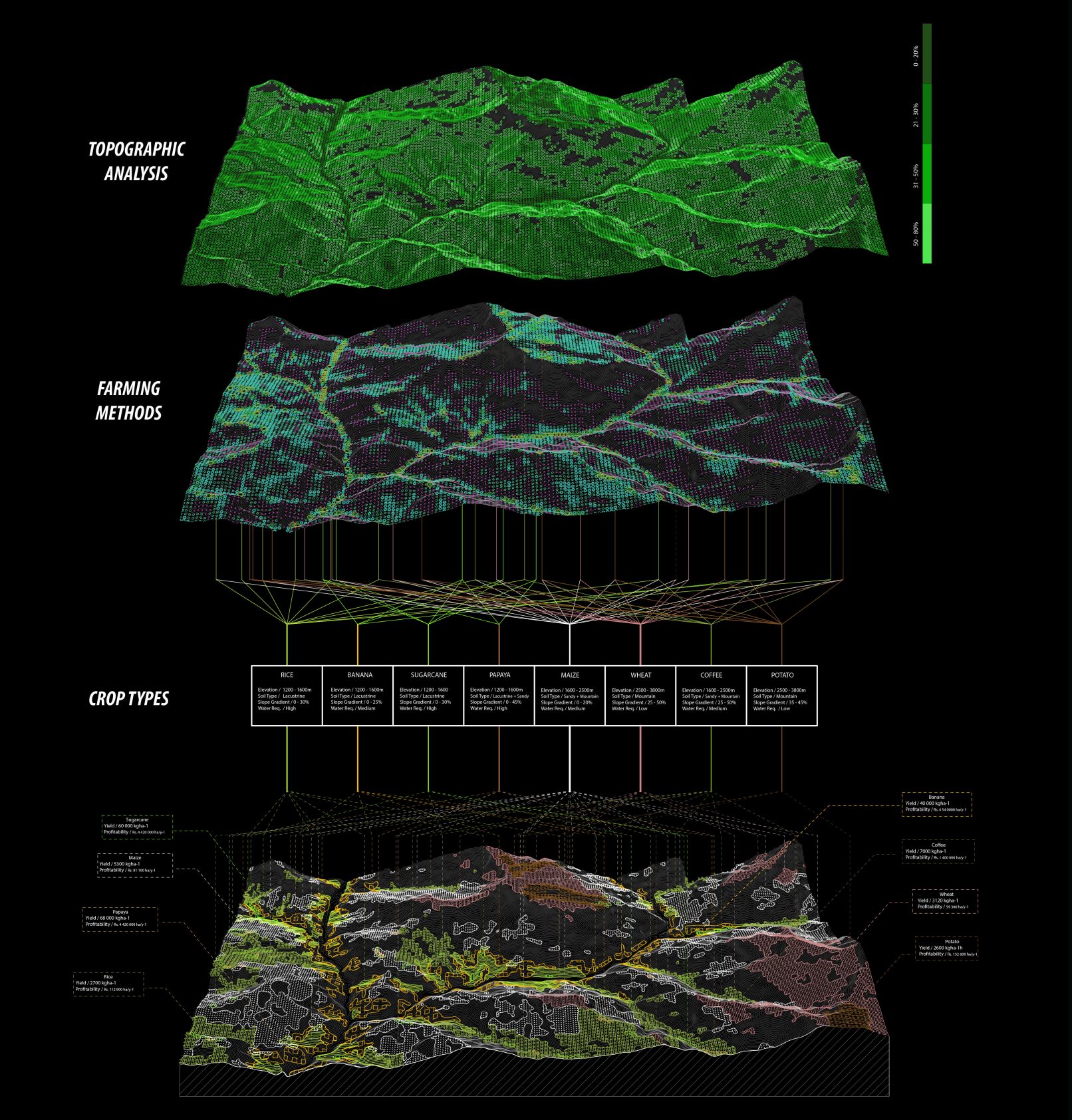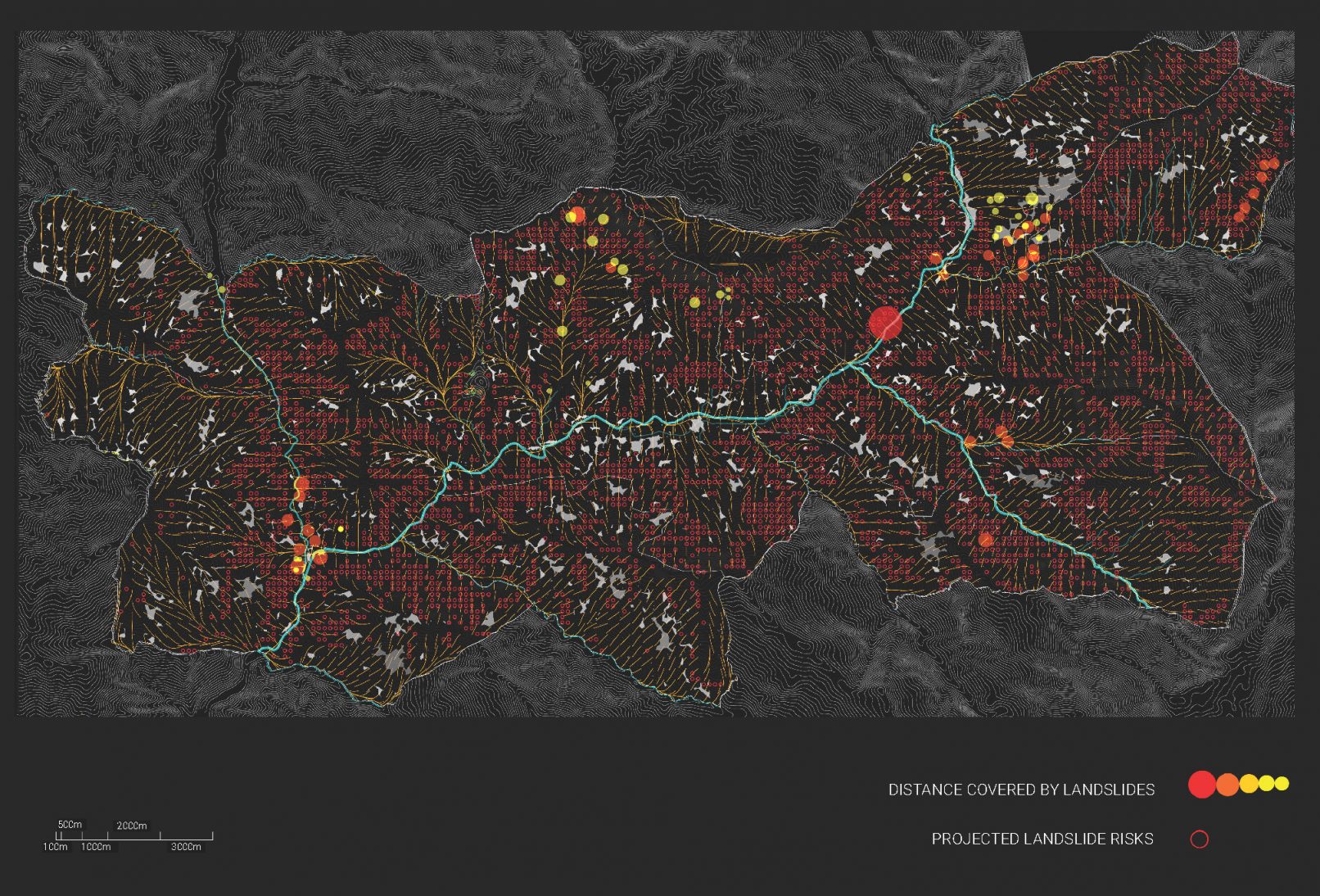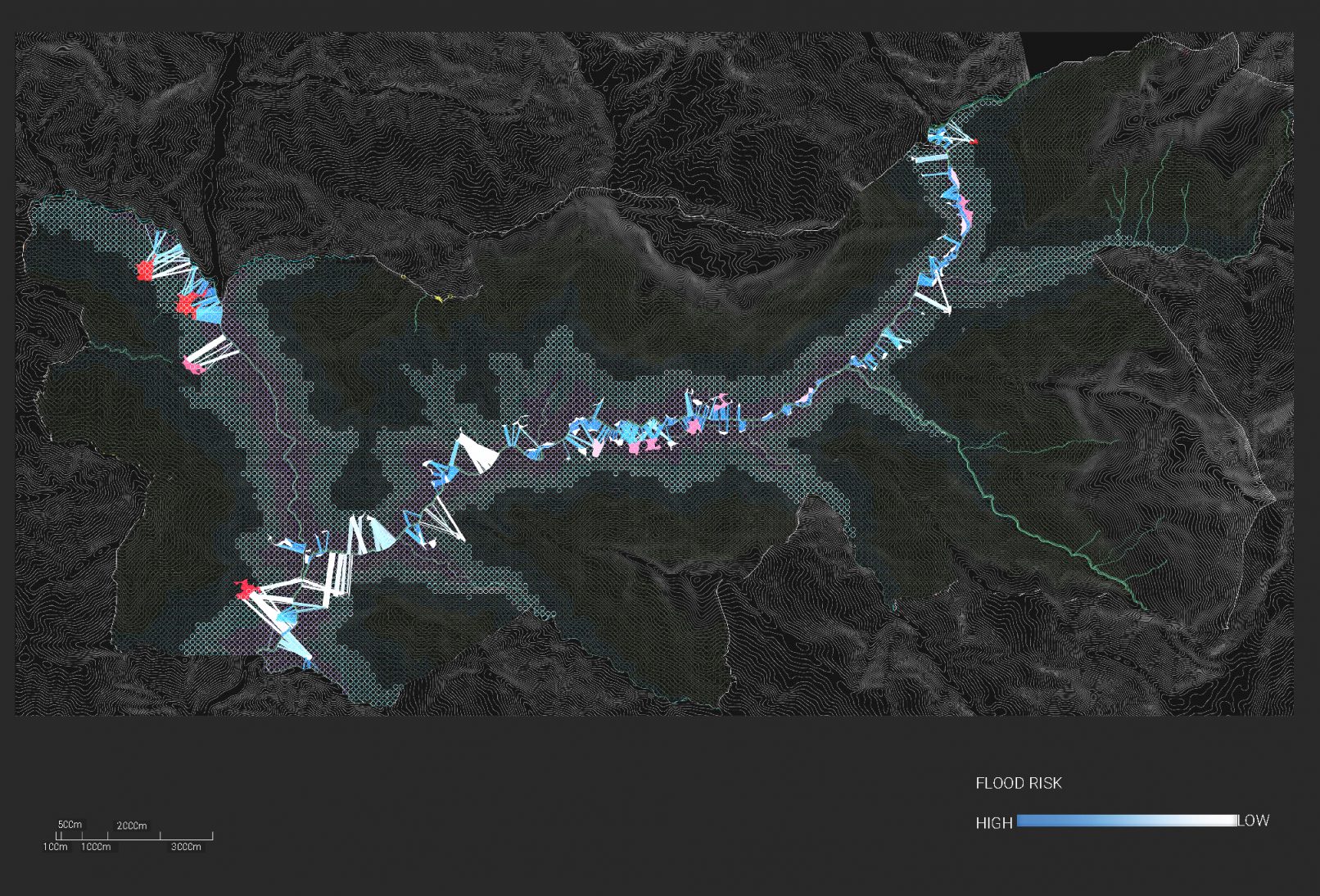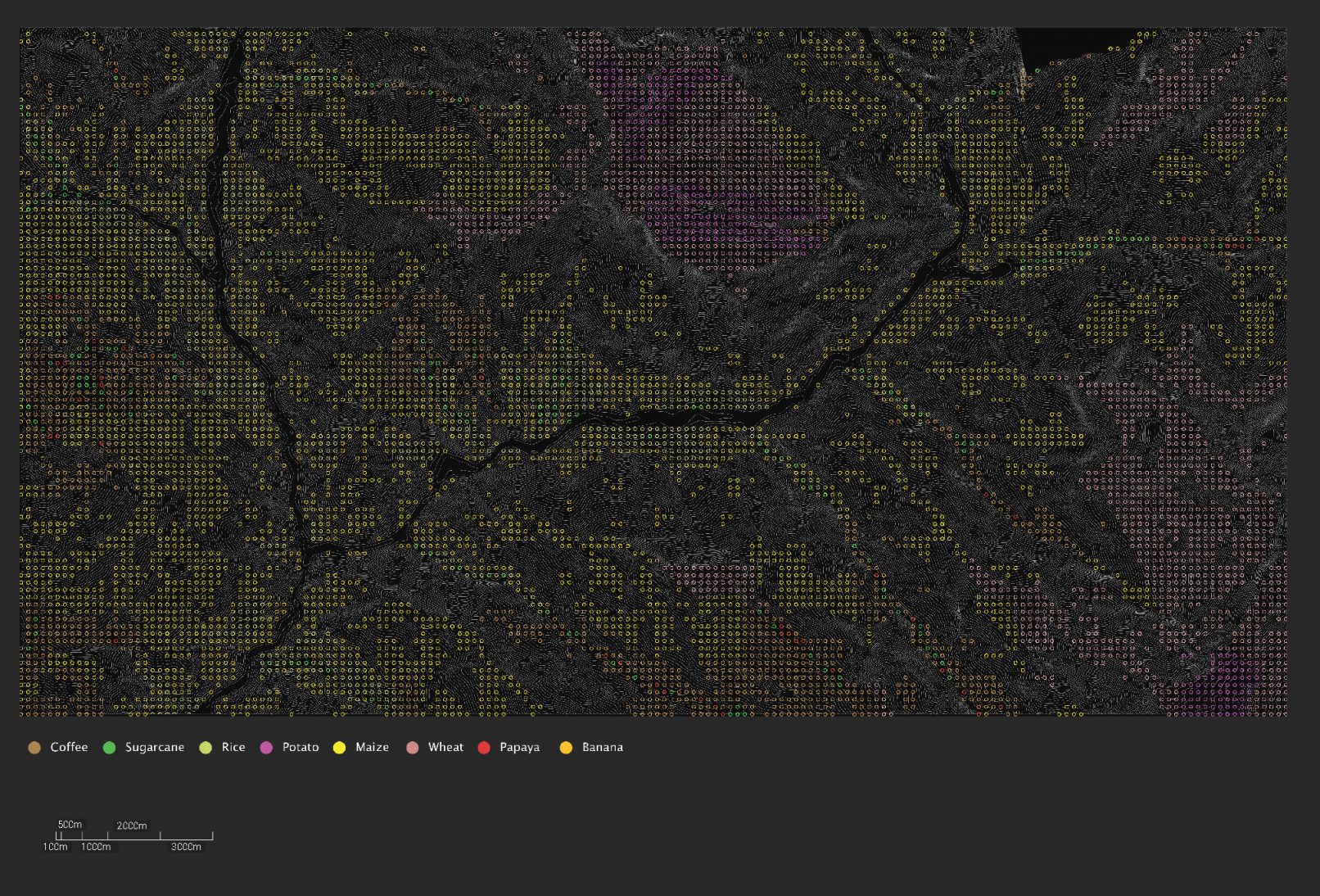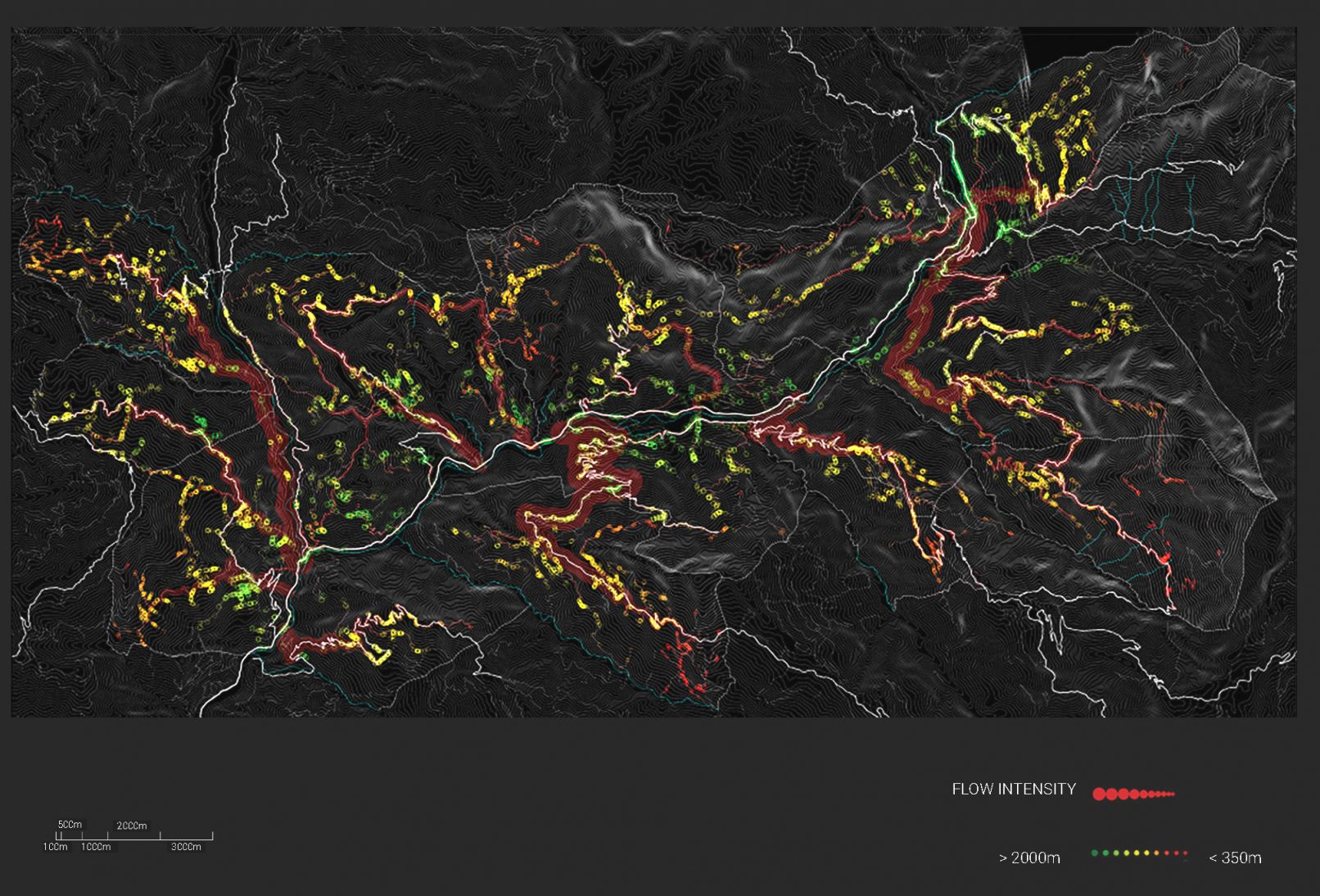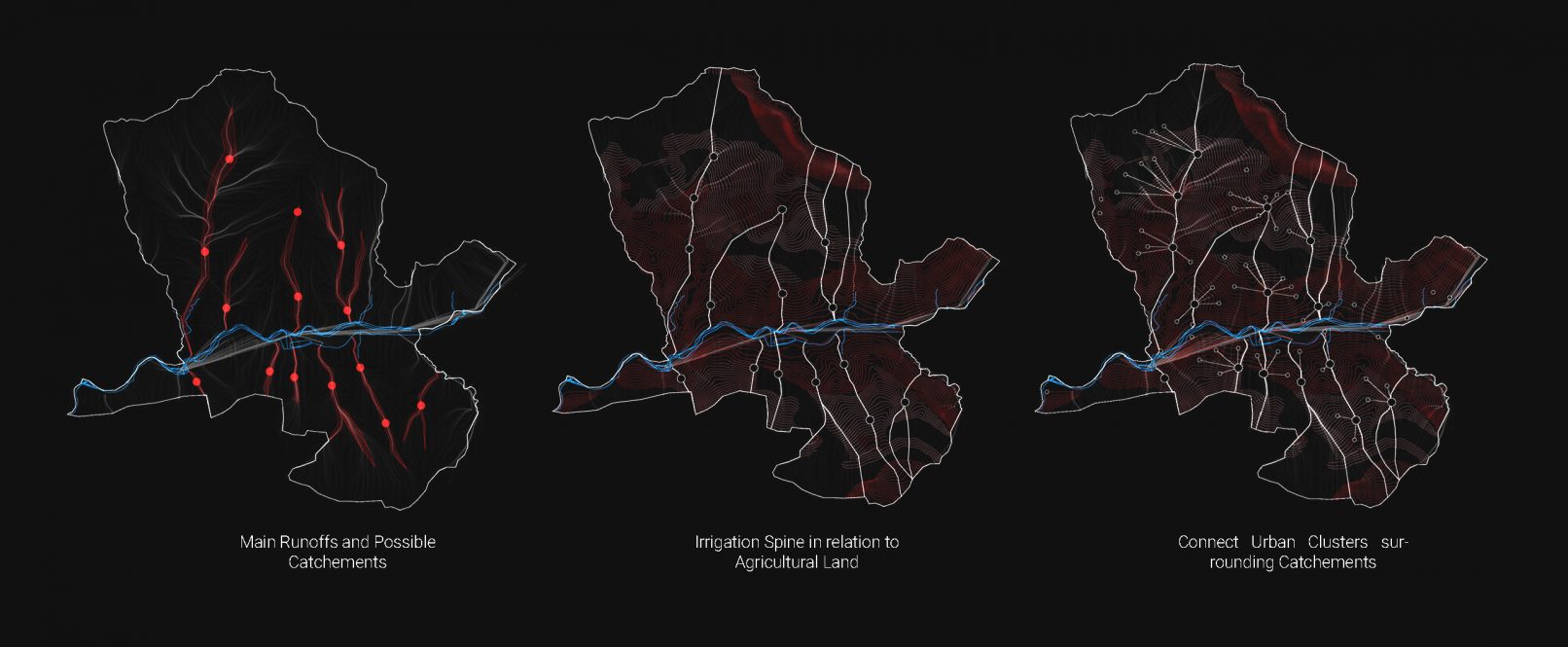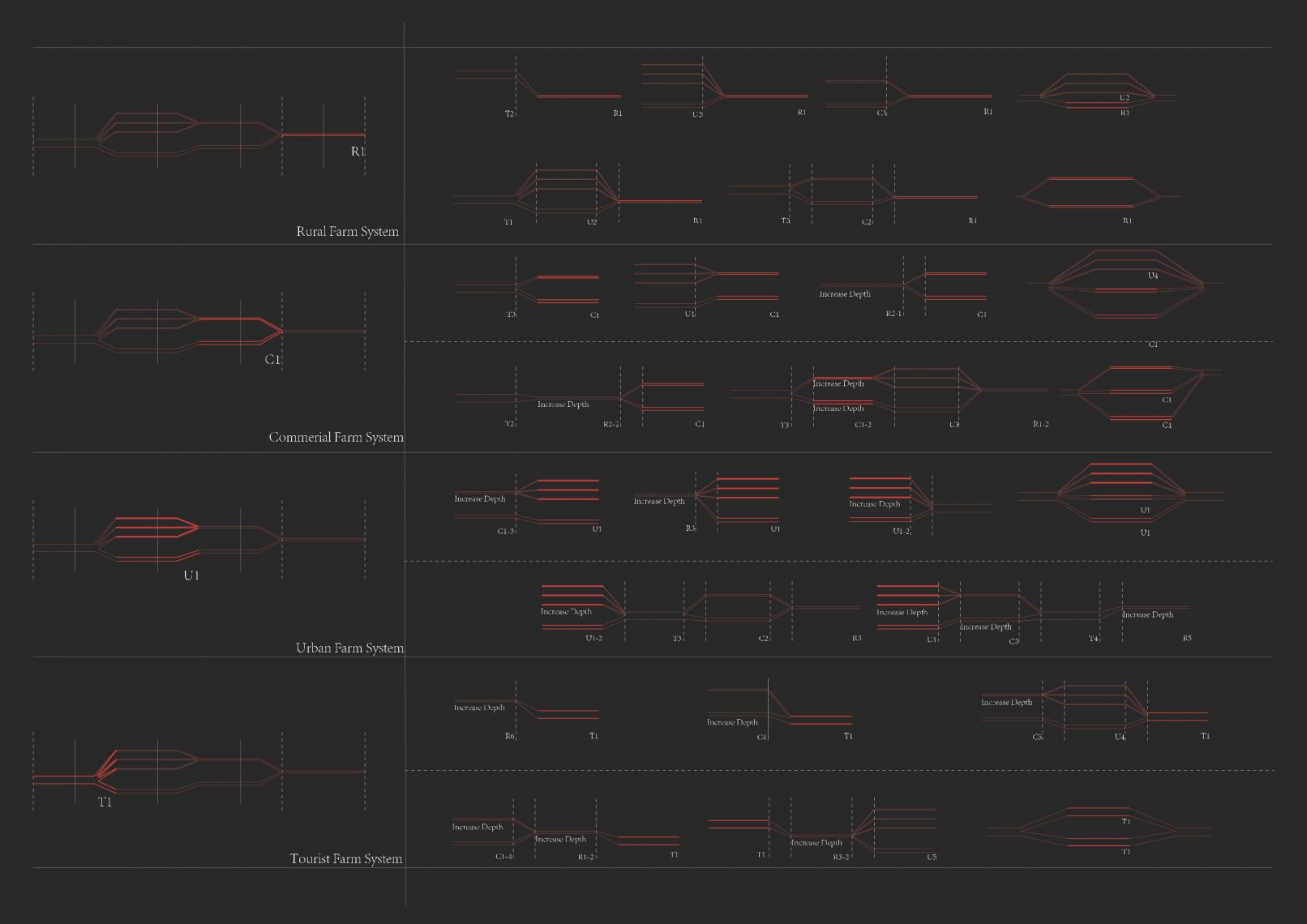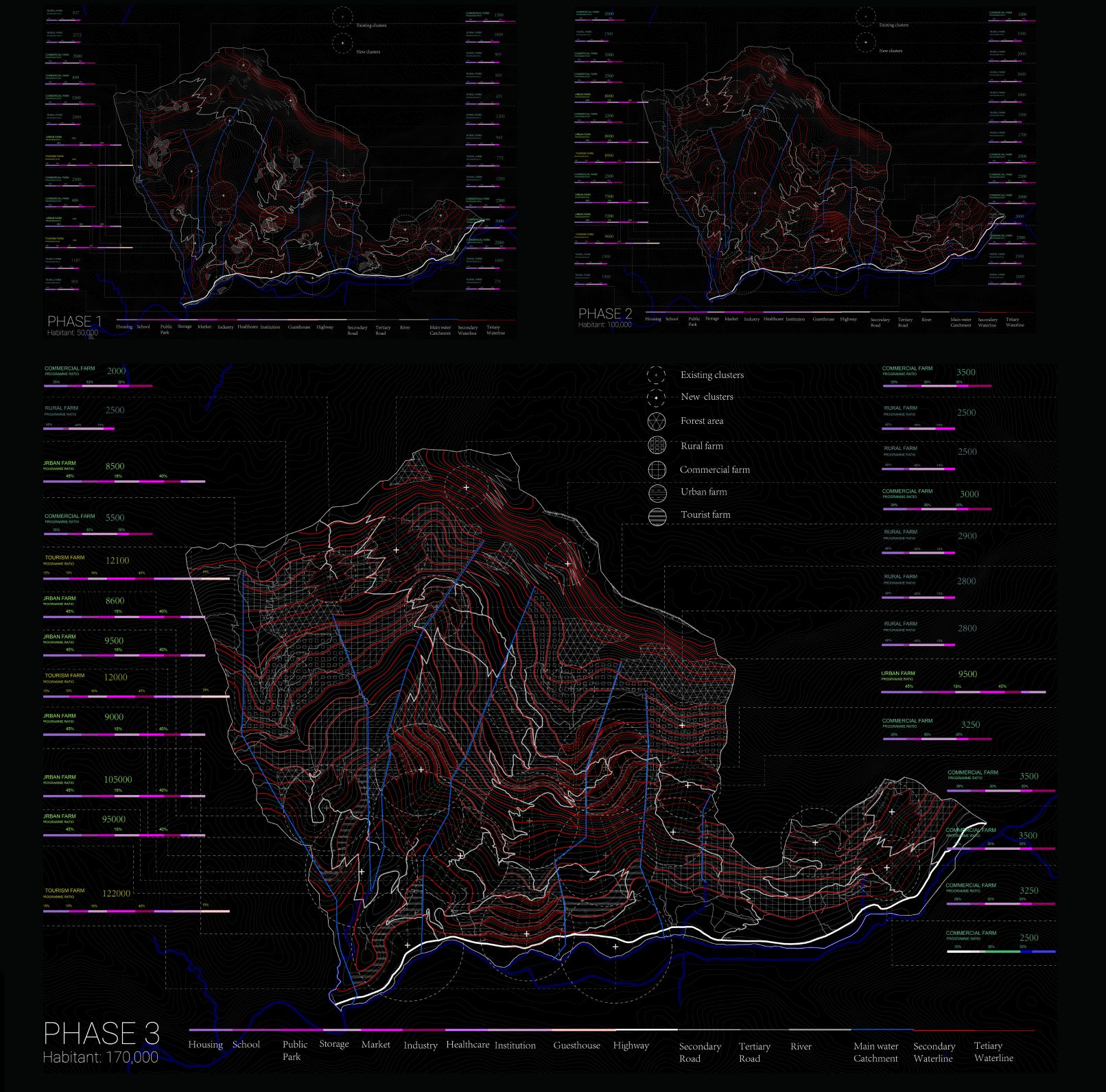2018_Nepal Agenda_BK
[Group 1: Bhote Koshi “Strengthening Alpine Habitats]
Credits
Advanced Option Studio, Spring Semester 2018. Singapore University of Technology and Design (SUTD_ASD)
Tutors: Eva Castro and Federico Ruberto
Students: Peng Haonan, Daryl Ho, Iffah, Timothy, Amanda
[Students’ Text] The Bhote Koshi river valley has already an established tourism infrastructure that caters mainly for cultural and extreme tourism seekers. Hence, agrotourism could be another addition to the existing tourism industry, establishing it as a strong and diversified tourist attraction site that is able to cater to a more family-friendly type of traveling. For prototypical studies, we would be looking at flooding mitigation strategies and different irrigation and terracing methods. These are essentially two water management systems, one which aims to draw away water from a site (mitigation) and another that aims to retain water in a particular area (agriculture terracing). Hence, we would be looking at these strategies to further understand how water systems work and modify these existing ones to form new systems that could tackle both issues. In conclusion, our overall conceptual framework for Bhote Koshi would be to identify potential agricultural and urban nodes and linking these nodes to form an agricultural industry belt. The main runoff locations on site could give rise to possible water catchment placements which could in turn house new settlements or agricultural land. The top of the water spine could also contain catchments for landslide prone regions so it reduces the occurrence of flooding at the river. Water channels are introduced to create irrigation spines for the arable land and to source the new and existing clusters. With the growth of these clusters, agricultural and forested land will be cleared to cater to the density changes of the population. These clusters will eventually grow and connect to each other, creating a dynamic relationship and fosters collaboration between each other towards growth.
